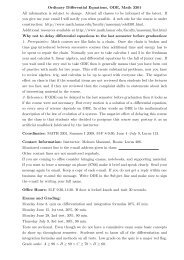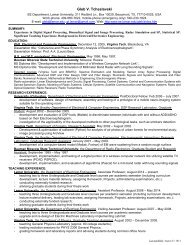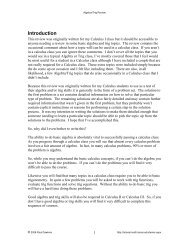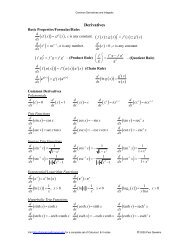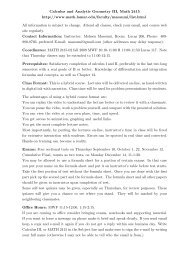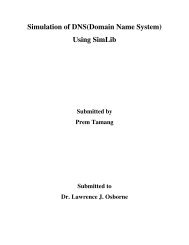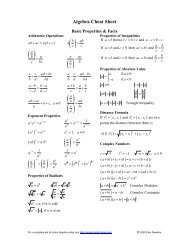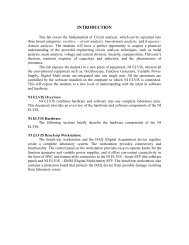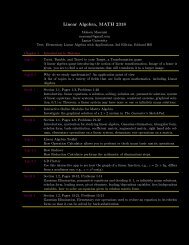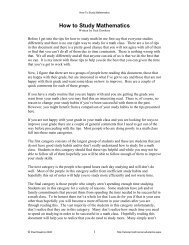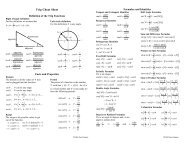program self-study report - Lamar University Electrical Engineering
program self-study report - Lamar University Electrical Engineering
program self-study report - Lamar University Electrical Engineering
Create successful ePaper yourself
Turn your PDF publications into a flip-book with our unique Google optimized e-Paper software.
7.3 Support Personnel and Institutional ServicesThe department enjoys the services of two full-time staff members, Mrs. Jane Capps the AdministrativeAssociate for <strong>Electrical</strong> <strong>Engineering</strong>, and Mr. Michael Fuller, the Laboratory Manager. Their service tothe department has a significant effect on day-to-day operations and the maintenance of a studentcenteredenvironment that is a component in the accomplishment of our <strong>program</strong> objectives.8. Program CriteriaOur <strong>program</strong> is constrained to that specific for <strong>Electrical</strong> <strong>Electrical</strong> engineering, which includes thefollowing topics from Criterion 8:The structure of the curriculum must provide both breadth and depth across the range ofengineering topics implied by the title of the <strong>program</strong>.Our <strong>program</strong> satisfies the breadth requirement by addressing the foundational areas of electricalengineering across 47 credit hours taught by department faculty that represents 36% of thecurriculum. We also place a strong emphasis on math, which is a foundational requirement ofelectrical engineering given the extreme levels of abstraction inherent in the discipline, and in thatrespect we devote 21 credits or 16% of the <strong>program</strong>. Breadth is also demonstrated in the spreadobserved across our <strong>program</strong> outcomes as seen in Table 3-2 EE Course Outcomes Matrix.For depth we rely on our senior level electives (six credits) and our culminating design experience(ELEN4206/4207) and seminar course (ELEN4101/4102).The <strong>program</strong> must demonstrate that graduates have: knowledge of probability and statistics,including applications appropriate to the <strong>program</strong> name and objectives; and knowledge ofmathematics through differential and integral calculus, basic sciences, computer science, andengineering sciences necessary to analyze and design complex electrical and electronic devices,software, and systems containing hardware and software components, as appropriate to <strong>program</strong>objectives.Our graduates have knowledge of probability and statistics from multiple sources: 1) MATH3370Intro to Theory of Statistical Inference, 2) INEN2273 <strong>Engineering</strong> Economics and 3) ELEN3381<strong>Electrical</strong> Analysis as well as from the sciences.In our Senior Projects course students design complex electrical and electronic devices usingsoftware tools and incorporating hardware and software components. Recent examples of theseinclude the following:Assistive Technology – project developed hardware and software for assisting persons withdisabilities that are able to drive. This project utilized voice recognition technology along with ahand-held chord keyboard controller.Hearing Aids Improvement – this team developed shielding for hearing aids from cellphoneinterference.EE Program Self-Study Report-2006 37




